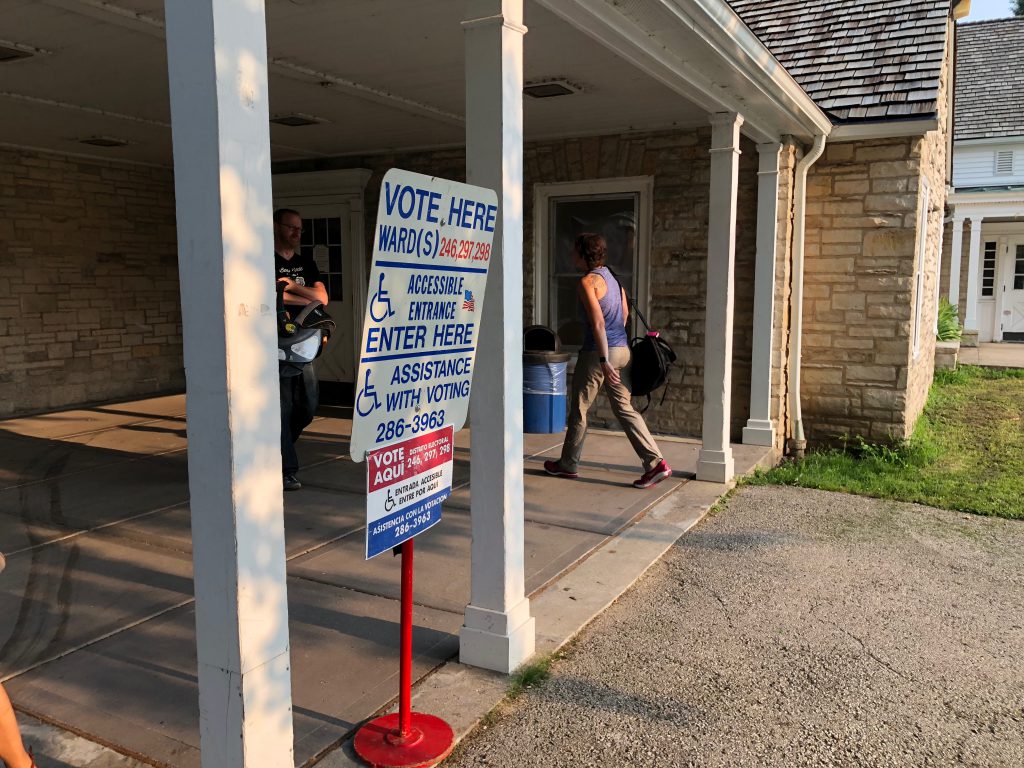Who Will Turn Out for April Election?
There might be a far bigger Republican turnout than some expect.
Start to consider Wisconsin’s April 7 presidential primaries and Supreme Court election by looking at what happened in the 2016 presidential primaries.
Two major presidential primary players in 2016 were Ted Cruz and Democrat Hillary Clinton – names that will mean nothing on April 7.
On April 5, 2016, 1.1 million residents voted in the Republican presidential primary. Cruz got 48 percent of that vote; President Donald Trump, 35 percent, and former Ohio Gov. John Kasich, 14 percent.
Almost 100,000 fewer residents voted in the Democratic presidential primary that year. Vermont Sen. Bernie Sanders got 56.5 percent of the vote; Clinton, 43 percent. In November 2016, Trump won Wisconsin by less than 23,000 votes.
*Republican turnout: There were 12 Republicans on the April 2016 presidential primary ballot, but only Trump’s name will be on the April 7 ballot. And, there were 98,344 more votes cast in the Republican presidential primary than in the Democratic contest four years ago.
Some experts believe the lack of a presidential contest will reduce the Republican vote. Will Republicans seek a huge turnout for the incumbent President? Or will some Republicans vote in the Democratic primary for the Democrat they think Trump would most easily defeat? Wisconsin is an “open” primary state, so a voter can cast either party’s ballot.
“Republicans have little choice but to see what is possible on April 7,” said UW-Madison Political Science Professor Barry Burden. “Trump is the only Republican on the presidential primary ballot, and his campaign would certainly like to make a show of his strength in the state.”
Charles Franklin, who directs the Marquette University Law School poll, sees similarities between the April 7 presidential primary and the 2012 primary before Republican Gov. Scott Walker survived a recall election. For this election, he said, “The GOP has every reason to try to maximize turnout for the state Supreme Court race and can also promote that as a show of support for Trump – as it did in turning out for Walker in the Republican primary for the recall election in 2012.”
“In that primary, in which Walker got 96.9 percent of the vote, Republican turnout was 647,122 and Dem turnout was 671,602. That is pretty good evidence that turnout can be large – even if one party has no real contest.”
A check of the campaign calendar signals how important Wisconsin is to President Trump’s re-election campaign: The President visited Milwaukee on Jan. 14, Vice President Mike Pence visited Madison on Jan. 28, and the state Republican Party opened a downtown Milwaukee office on Feb. 7.
*Undecided Democratic nomination: The addition of former New York City Mayor Michael Bloomberg, a billionaire who is self-financing his campaign for President, to the fight for the Democratic nomination may prolong that contest. That could give Wisconsin Democrats a chance to help determine the nominee.
Franklin’s Marquette poll in January of Democrats statewide gave former Vice President Joe Biden a margin-of-error lead of 4 percent over Sanders.
*Supreme Court election: The April 7 election will also determine whether Justice Daniel Kelly, a 2016 Walker appointee to the Supreme Court, or Dane County Circuit Judge Jill Karofsky wins a 10-year term on the Court. Although the Supreme Court election is considered non-partisan, the Republican Party has endorsed Kelly. The state Democratic Party is expected to endorse Karofsky before April 7.
“Kelly’s campaign will be challenged by the higher turnout expected in the Democratic presidential primary,” Burden said. “That is likely to advantage Karofsky. There is an off chance of a Kelly victory, but Republicans might also be glad to keep the race close on a primary day where Democrats have the upper hand.”
Unofficial primary vote totals suggest it may be the third straight close election for the court. Kelly got more than 352,000 votes statewide. But the combined vote total for Karofsky and Ed Fallone, the third candidate who endorsed Karofsky, was more than 350,000.
*Ground games: “Both parties would be smart to use the April election as a test of their voter mobilization strategies and tracking technology,” Franklin said. Which would also help them get ready for the November presidential election.
Steven Walters is a senior producer for the nonprofit public affairs channel WisconsinEye. Contact him at stevenscotwalters@gmail.com
The State of Politics
-
RNC Brings Fame to Gen Z Party Leader
 Jul 15th, 2024 by Steven Walters
Jul 15th, 2024 by Steven Walters
-
Wisconsin’s Republican Roots Run Deep
 Jul 8th, 2024 by Steven Walters
Jul 8th, 2024 by Steven Walters
-
Feuding Supreme Court Justices Need a Break
 Jul 1st, 2024 by Steven Walters
Jul 1st, 2024 by Steven Walters






















